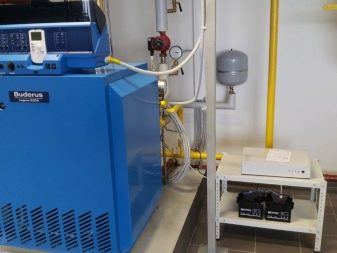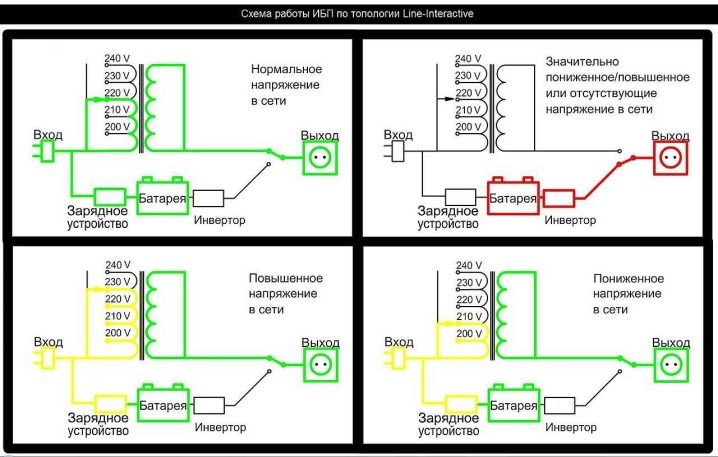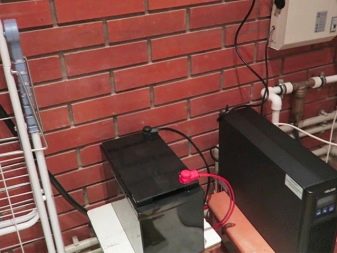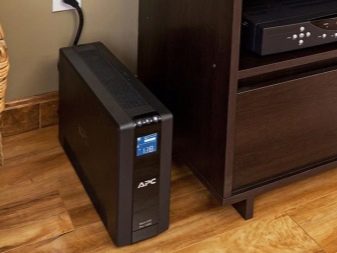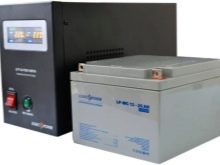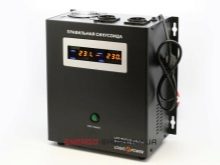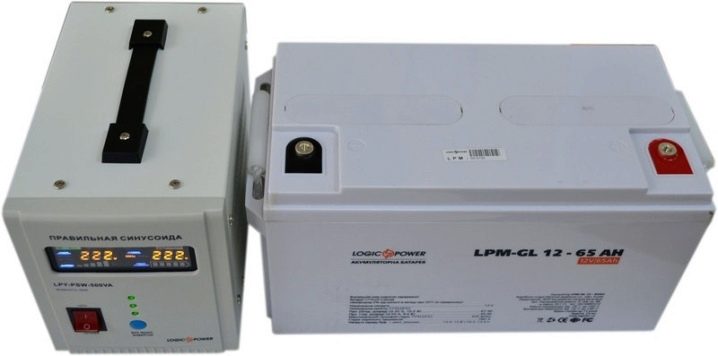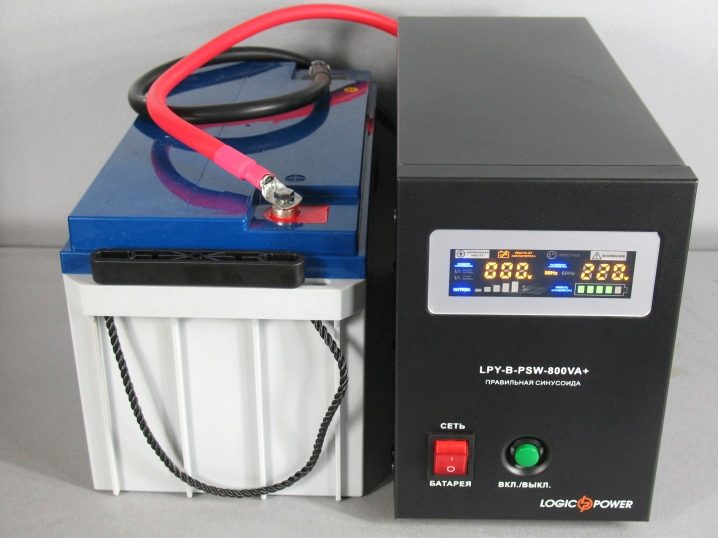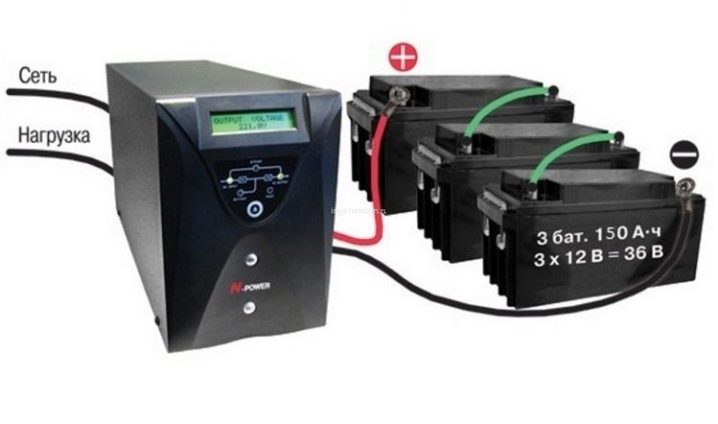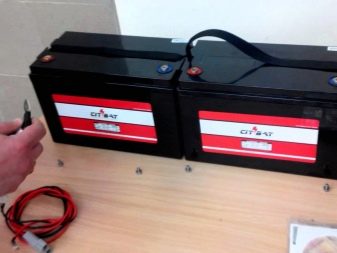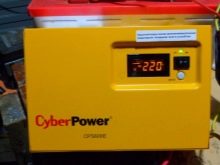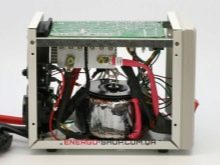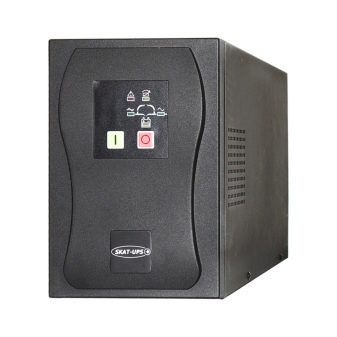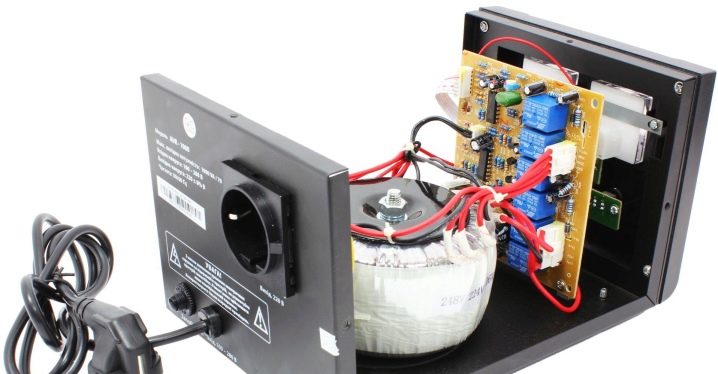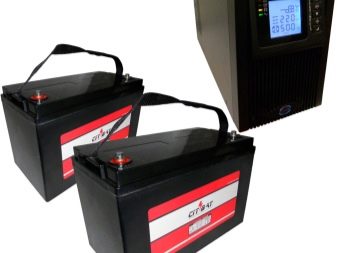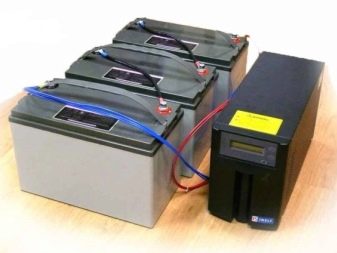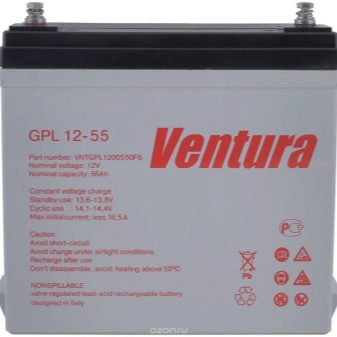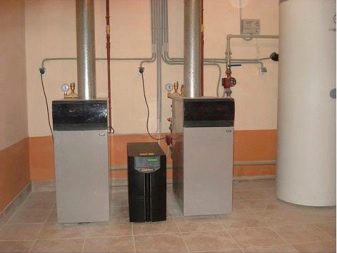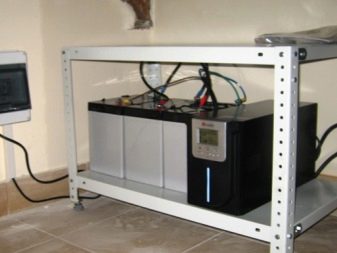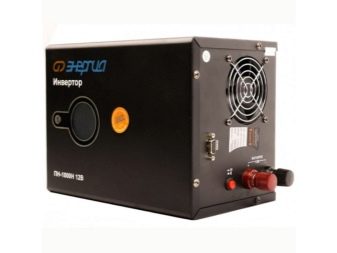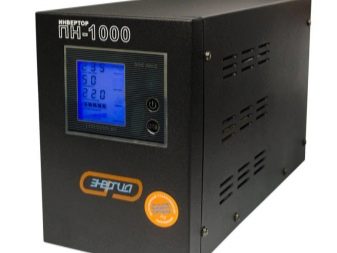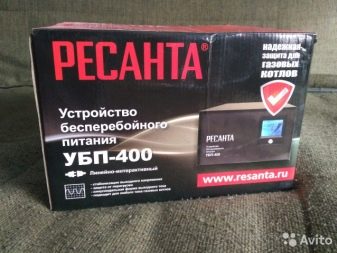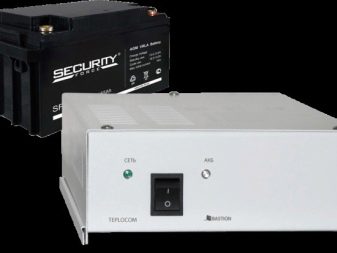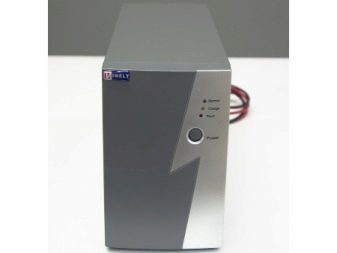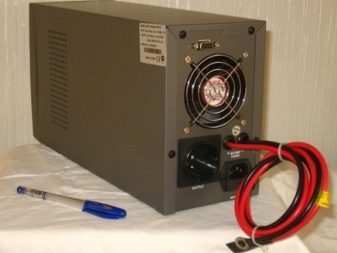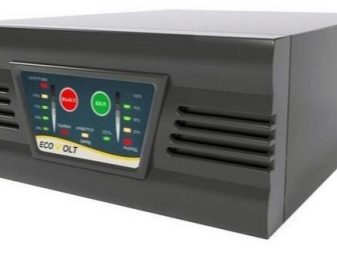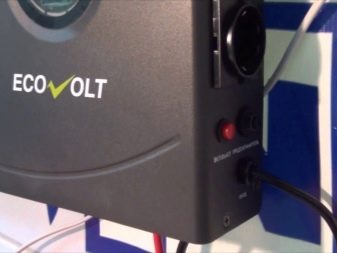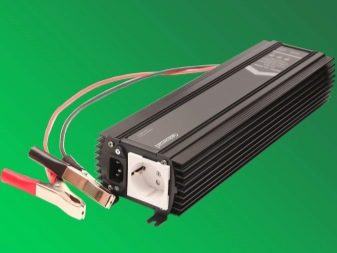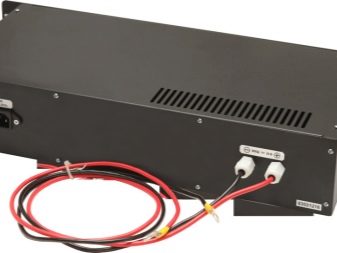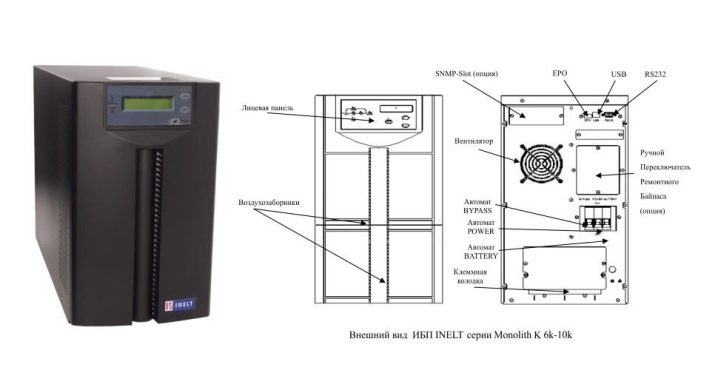How to choose an uninterruptible power supply for gas boilers?
Today, independent country house heating systems contain a circular pump to maintain the required pressure in the circuit, as well as a control element operating from the electrical network. In this regard, in the event of short circuits and other interruptions of electricity, the operation of the entire heating system is terminated.
The easiest way out of this situation is an uninterruptible power supply for gas boilers. It is worth considering every nuance that arises in the selection of the device.
Work system
The main task of uninterruptible power supplies is to maintain a constant supply of electrical energy to the heating system, even in the event of short circuits.Further, the design and functionality of devices may vary depending on the type.
In general, when choosing a suitable device, you need to look at the following characteristics:
- the harmonic type corresponding to the output voltage should be in the form of an ideal sinusoid without distortion in order to increase the durability;
- the power consumption of the uninterruptible power supply must be twice the power of the gas boiler due to the high energy consumption of the starting currents of individual parts of the system;
- switching time between the main and battery mode of the source should tend to zero in order to avoid interruptions;
- battery capacity is directly proportional to the time of their work;
- Each type of UPS has its own input voltage range, which expands with increasing device quality;
- An important attribute of the unit is the presence of grounding for increased safety.
The operating time of a bespereboynik can be calculated using a special formula. To do this, multiply the capacitance and voltage of the battery and divide the resulting number by the full load power. The resulting number is most often expressed in milliseconds.
For safety reasons, do not connect the power supply used for stationary computers to a gas boiler. The duration of their work is about 15 minutes and is designed to turn off the computer, but for the heating complex this period is short.
As for the output sinusoid, distortions of its shape (trapezoidal jumps, stepped harmonics), first of all, affect the operation of the pump - it begins to produce unnatural noises and movements in the form of jerks.
The form of the output voltage is declared in the passport of the device, and if the UPS has a stabilizer, it will tend to the ideal sinusoid.
To calculate the optimal power consumption of bespereboynik with a gas boiler, it is necessary to sum up the power of the electronic unit, the circular pump, and the cooling system (if any). In this case, the documentation of the device indicates the thermal power in watts.
The total capacity of the UPS with a gas boiler is calculated by the following formula:
A = B / C * D, where:
- A is the power of the device under study;
- B is the power of the system indicated in the passport data;
- C is the coefficient of reactive load;
- D is the amount of energy for an inrush current (triple power of a circular pump).
Thus, for a documented boiler power of 45 watts, the total power will be 192 watts, and for such a device, the power consumption of the source is 250 watts.
Kinds
Offered in the market UPS for gas heating boiler it is conditionally possible to divide into the following types:
- backup (off-line);
- line-interactive;
- Double conversion UPS.
A distinctive feature of backup uninterruptible power supplies is a low price, simplicity of device and operation.
In the parameters of the device indicated the boundary values of the network potential (from 170 to 270 volts). When these limits are exceeded, the unit transfers the load to the battery, otherwise the power switches back to the network mode. At the same time, the battery capacity is approximately 5–10 Ah, which allows them to work up to half an hour, after which the operation of the device and the entire heating system stops. The transfer of power from the network mode to the battery occurs almost instantly - in 15 milliseconds.
Among other advantages of the backup UPS is the absence of noise during operation, as well as high efficiency in the power mode from the network.
The structure of reserve bespereboynik also includes such elements as:
- a rectifier that converts a variable value of the potential of 220 volts to a constant (12 volts) for charging batteries;
- 220 volt inverter that returns voltage to alternating currents and has an ideal harmonic (sine wave) to provide power to the boiler;
- element that controls the value of power.
The main drawback of the device is the absence of a stabilizer, which leads to the risk of jumps characteristic of the winter season. As a result of frequent switching modes, the operation of the unit deteriorates, and it wears out quickly.
In addition, such devices do not provide for the possibility of changing the boundary voltage values, and the battery life is relatively short due to the small capacity. To prevent power surges and extend battery life up to 10–12 hours, there is an operation mode with an external battery. However, its cost is relatively high, and sometimes even exceeds the price of the device itself.
In addition, with intensive use, external and internal batteries require regular inspections (every two years) and replacements (every four years). It should be noted that the capacity and charge levels of all batteries in the circuit must be the same for uniform discharge and effective use of the operating time. When connecting external batteries, you should be familiar with the value of the maximum charging current specified in the passport of the device.
By multiplying this number by 10, the maximum battery capacity is obtained, which is able to charge from the given UPS. It is desirable that the batteries are fully charged, which will increase the durability of the device.
In contrast to the backup UPS, there is an element in the line-interactive one that stabilizes the voltage and prevents its jumps from occurring.
Boundary power limits remain the same (170–270 volts), and switching between modes occurs automatically and already with less risk of wear or interruptions.
In the more expensive and modern models, the voltage is transferred to the battery mode at jumps exceeding 5–10% of the norm.
Trouble may arise when operating linear-interactive liquid fuel-powered UPSs. Most often, line-interactive UPSs are installed at the entrance to private homes, and external high-capacity batteries are connected to them. And it is also possible to use a solar battery as a battery load, which makes the use of UPS on the street more economical.
Among the advantages of such devices it is possible to distinguish a small switching time (2-10 milliseconds), which practically does not affect the operation of the system, high efficiency in the state of the mains supply, as well as the ability to adjust the noise without using the battery.
Among the drawbacks, it is worth noting the backup UPS that is similar to: the inability to adjust the shape of the output sinusoid in the mains supply mode, the battery capacity limit (up to 5 kVA), and the inability to change the frequency of the consumed current.
The problem of the presence of a time delay during the transition between modes, which, despite the reduction compared with backup UPS, reduces the durability of the device remains unchanged. Line-interactive bespereboyniki are in great demand than the backup due to the presence of the stabilizer capacity, but their cost increases for the same reason.
Uninterruptible power supplies with double conversion work according to a different principle - here there is a double conversion element that inverts the incoming current, corresponding to a variable potential of 220 volts to direct current, and then does the opposite, returning the variable component.
This system helps to prevent all sorts of noise and potential surges in all devices of the heating system, since the power passes only through the UPS itself. The cost of such a unit increases significantly compared with peers due to the complexity of the device and operation.
Another distinctive feature of such UPSs is that at a low value of DC voltage, the battery connected to the second inverter input is recharged. Thus, when the alternating voltage of the supply voltage disappears, the battery, which is always connected to the line, does not stop its work, and the time to turn it on is not spent.
The output sinusoidal harmonic of the device has an ideal form in comparison with linear-interactive devices, where the waveform is mostly stepped.Moreover, its frequency and voltage are already subject to regulation, while the voltage range expands to 100–300 volts.
And also there is the possibility of connecting the generator on liquid fuel, for example, on gasoline or to gas boilers. However, here it is necessary to pay attention to the power consumption, since an electric current jump occurs when the generator starts up. In this regard, an automated boiler complex is attached to the main heating system.
Using a double-conversion UPS in outdoor conditions is safe and practical, since, thanks to the stabilization of electrical parameters, such devices are not afraid of even lightning strikes.
High noise caused by fan operation to prevent overheating, relatively low efficiency (80–95%), as well as high price can be identified among the obvious drawbacks of the unit.
Components
In general, a set of uninterruptible power supplies It is possible to distinguish such two main blocks as:
- a stabilizer that provides a constant supply of electricity;
- battery module that turns on when there is an interruption in the main mode.
The main source unit always contains a rectifier and an inverter, making manipulations with alternating and direct currents, converting one into another. In more modern types there is a voltage corrector, as well as a special cooling system (fan).
As for rechargeable batteries, there are two varieties on sale: gel and fiberglass. In the first case, the element is filled with a conductive substance containing silicon compounds, adding viscosity to it. As a result, the electrolyte does not spill out with strong fluctuations or the fall of the unit.
Battery safety is also ensured by converting the released oxygen and hydrogen into water.
Fiberglass batteries contain a dense layer of porous fiber “pads” inside them that prevent the formation of water. The advantage of gel batteries is absent here - liquid electrolyte can leak out during mechanical damage of the system.
Thus, gel batteries, due to greater safety, are more expensive than fiberglass batteries by 10–20%, provided that they have the same capacity.However, the second option is acceptable if the device is not subject to shaking and will be in a safe place.
Operation Tips
When installing uninterruptible power supplies, it should be remembered that the unit energizes the heating system of a private house, so environmental conditions must be optimal to avoid overheating or cooling. The required ranges of humidity and temperature of the room in which the UPS will be located are always indicated in the passport of the device. In addition, in the environment should not be caustic or flammable chemical compounds in the gaseous state.
Especially the temperature should be maintained in batteries. No need to put them close to each other in order to avoid mutual heating.
The average air temperature should be from +20 to +25 degrees Celsius. Excess moisture should also be eliminated - it can lead to condensation of water on the surface of the electronic device.
Do not cover the sump with a cloth, which can interfere with the operation of the cooling system. Do not forget about the ground, which is equipped with most modern devices.The cable cross-section when connecting must also correspond to the cross-section of the connected gas boiler. It is desirable that the unit is permanently connected to the network to prevent frequent switching on and off, disabling it.
Comparison and rating of manufacturers
To choose the best option for an uninterruptible power supply, it is worth considering the optimal characteristics for specific conditions of use - both the environment and immediate needs.
Consider the most popular UPS models and consumer reviews.
- Line-interactive bespereboynik "Energy PN-1000" Domestic production is a simple and reliable unit, equipped with grounding, as well as a voltage stabilization system and protection against short circuits. The internal battery of the device has a capacity of 75 Ah, and the range of permissible potential is 155-275 volts. Switching time between operating modes - 8 milliseconds. The cost of the source on average is thirteen thousand rubles.
- "Resanta UBP-400" - This is one of the cheapest copies on the market, which is often used in office space or apartments.There is no voltage balancing system in the device, which increases the risk of interruptions. In addition, the switching time between modes is relatively long - four thousandths of a second.
- Source Teplocom-300 from the Russian company "Bastion" - This is a cheaper option, whose price is in the region of nine thousand rubles. The device allows you to connect only one external battery with a capacity of 25–65 Ah and is guaranteed for 5 years. According to customer reviews, the downside of the UPS is a long switching time (3 seconds), as well as an unacceptable real value of the output AC voltage (245 volts at the maximum allowed by GOST 242 volts). In addition, the system is subject to a complete discharge of the battery and a sudden emergency shutdown. In addition, working in normal mode, the device emits strong noise caused by the cooling system.
- "Source IDP-1-1 / 1-1-220-A" with double conversion differs in resistance to power surges in connection with the equipment of hermetic internal batteries with high capacity. The voltage range at maximum load on the battery pack at the same time can reach 160–300 volts. Unlike analogs,The system has a warning mechanism for sms-alerts, notifying about the need to recharge the battery, but the disadvantage of this function is that the client will have to purchase an additional SNMP fee. By virtue of the advantages, the cost of the unit increases substantially and tends to twenty-five thousand rubles.
- Inelt Intelligent 500LT2 - This is a small-sized and well-equipped device of the average price category (about sixteen thousand rubles), which has a powerful device for fast charging, a built-in battery with a capacity of 38 Ah, designed for 55 minutes of autonomous work, and a maximum capacity of external batteries 250 Ah. The range of potentials is also large - from 165 to 275 Volts, which allows the device to operate with a higher probability without switching to battery mode. In addition, the device has a “cold start” function, which makes it possible to start ups with no voltage at the input. Among the disadvantages are the strong noise of the cooling system when recharging the battery and the need to install the device in a heated room while the battery is charging. Switching between modes according to reviews happens almost instantly, but discomfort can bring a loud and not always necessary sound alert.The device is compatible only with gel batteries.
- Ecovolt ECO 612E 800BA - This is an inexpensive device, in the region of ten thousand rubles, of Russian production with an internal potential stabilizer and a wide assumption of error in the range of alternating voltages (-35%, + 25%). An interesting feature is the presence of the display, which displays the current values of voltage and battery charge level. In addition, the critical state of the battery is warned on time due to an audible alert. According to customer reviews, minus minor defects, this unit is one of the best in its price category.
- “IBPS-12-350K. 2 OnLine - This is an apparatus of the average price category (in the region of fifteen thousand rubles), which has a clear and significant drawback - it is an inaccurate assembly of components. Moreover, the length of the connecting wires of the device is only 30 centimeters, which makes the UPS highly dependent on the location. The advantage of the unit is that the majority of components are purchased in South Korea or China, which in reality makes the purchase less profitable against the background of currency crises.As well as the UPS is equipped with a three-level battery charge system, which in time changes the charging mode to a more intensive one. Among the complaints of consumers there is the fact that, despite the On-line operation mode stated in the documentation, the device works with minor interruptions, manifested in the form of a flashing indicator.
- Inelt Monolith K10000LT - this is an expensive high quality device that guarantees uninterrupted supply of input voltage with instant correction, connection to a personal computer, as well as battery operation for three hours. The power of the UPS is enough not only to provide electricity to a residential building, but also to power a whole set of servers. Among the shortcomings: a small probability of marriage, expressed in the absence of switching to the offline mode, as well as the management of parameters, in particular, when displaying information on the monitor. The cost of such a unit is one hundred nineteen thousand rubles.
You can learn some subtleties of choosing an uninterruptible power supply for gas boilers in this video.


